Release date: 2018-01-08
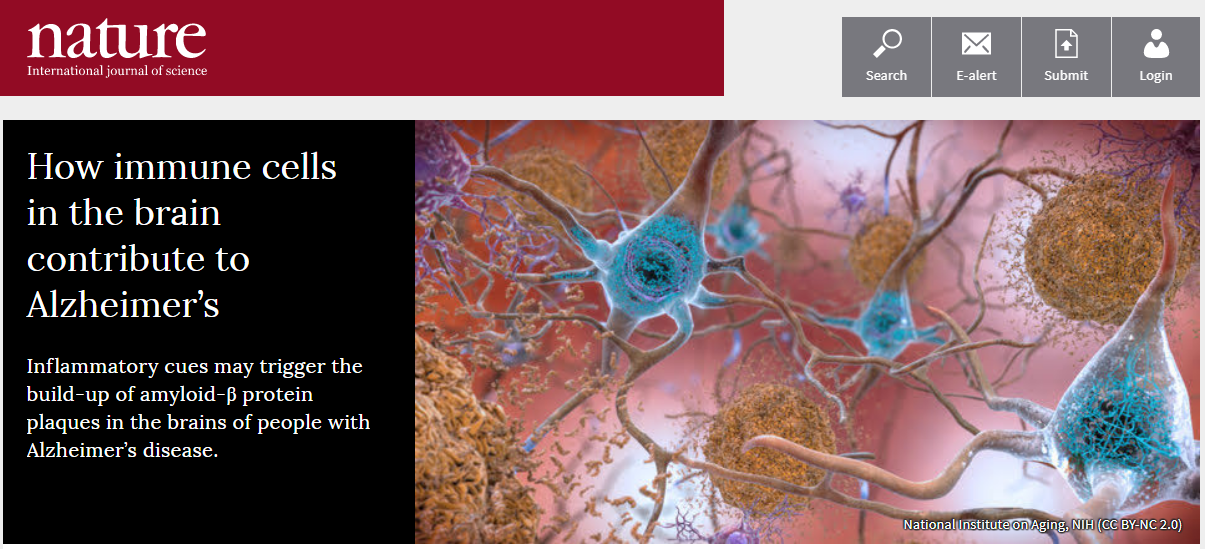
Image source: Nature
Alzheimer's disease is a devastating neurodegenerative disease that eventually leads to dementia, and there is currently no effective treatment. A major feature of this type of disease is the accumulation of plaques in the brain of the patient. These "plaques" are formed by abnormal aggregation of beta-amyloid (Abeta) in neurons.
Previously, studies have shown that toxic plaque triggers the inflammatory mechanism through the innate immune system of the brain. However, the precise process of this effect leading to neurodegeneration and pathological progression has not yet been fully clarified.
Professor Michael Heneka, author of the latest Nature paper, said: "The deposition and spread of Abeta may occur decades before clinical symptoms (such as memory problems). Therefore, a better understanding of these processes may be the treatment of Alzheimer's disease. The key to the new approach, and this therapy will target the early stages of Alzheimer's disease."
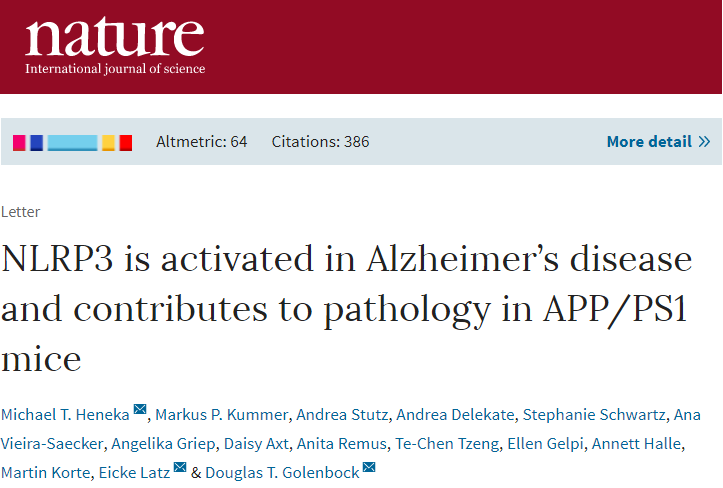
Image source: Nature
In fact, Professor Heneka and his colleagues have been investigating the role of the brain's immune response in the pathogenesis of Abeta. In 2013, a study published by the research team on Nature (above) showed that an innate immune sensor, the molecular complex NLRP3, was activated in the brains of Alzheimer's patients and was in a murine model. (murine model) contributes to the onset of Alzheimer's disease.
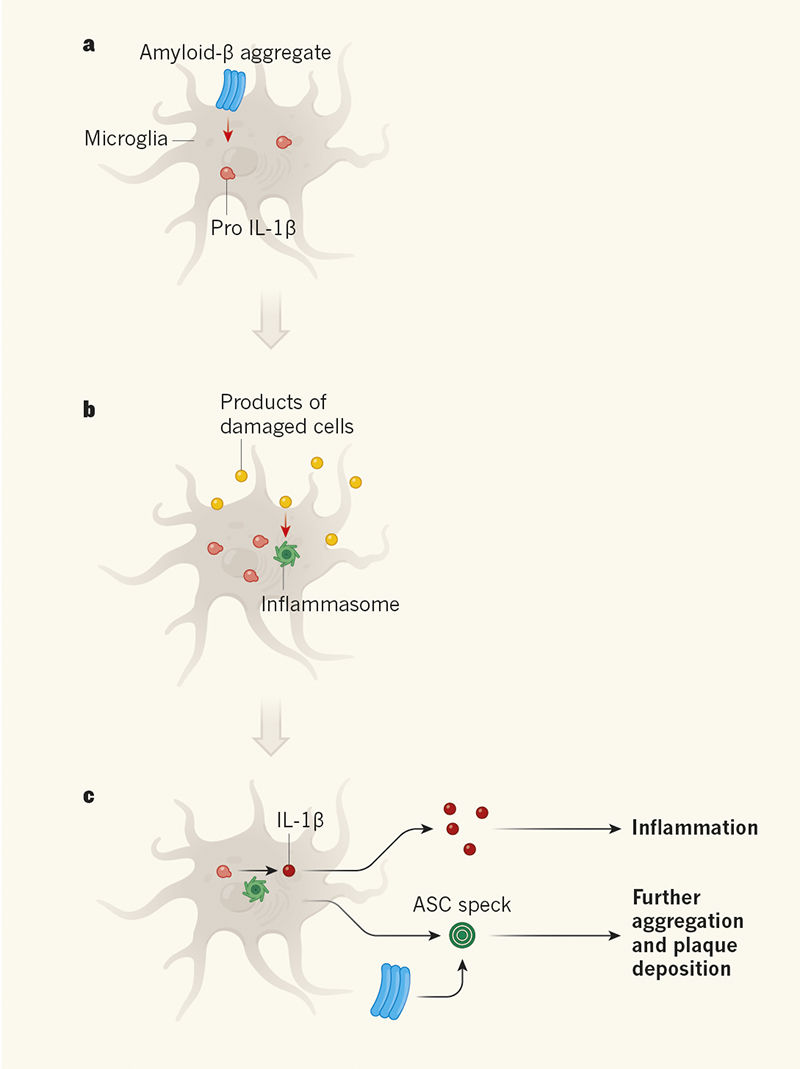
Figure 1 | Amyloid-β protein and inflammation. (Source: Nature)
NLRP3 is a so-called inflammasome that triggers the production of highly pro-inflammatory cytokines. Upon activation, NLRP3 forms a large signal complex with the adaptor protein ASC - "ASC specks". "ASC specks" can be released from cells, but previously, this release has only been shown to occur in macrophages, and their relevance in disease processes is a mystery.
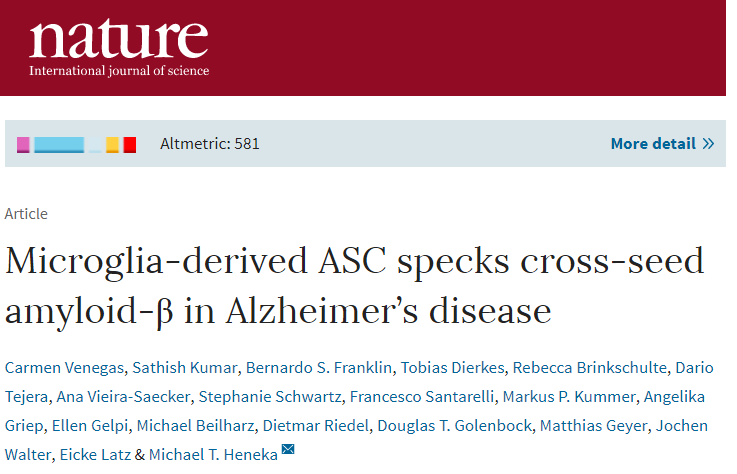
Image source: Nature
In the latest study, scientists found that "ASC specks" can also be released from the immune cells activated by the brain, microglia. In addition, the new findings provide a direct molecular link between “ASC specks†and neurodegeneration. Studies have confirmed that "ASC specks" bind Abeta in the extracellular space and promote Abeta aggregation.
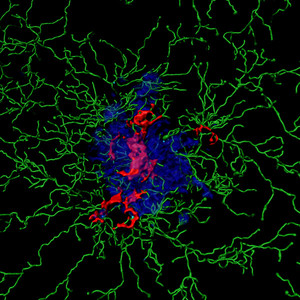
Inflammatory proteins (called "ASC specks", red) within the nucleus of an aggregate of Amyloid-beta peptides (blue). further, immune cells (green) are shown. Researchers of the DZNE and the University of Bonn report in "Nature" On the role of inflammatory mechanisms in Alzheimer's disease. Image reconstruction of microscopy imaging data by Dario Tejera, University of Bonn.
Professor Heneka said: "These evidences directly link innate immune activation to the pathological process of Alzheimer's disease. In summary, our findings suggest that brain inflammation is not just a bystander phenomenon, but a disease. A powerful 'promotor' of deterioration. Therefore, targeted immune response will become a new treatment for Alzheimer's disease."
Reference materials:
Inflammation Drives Progression of Alzheimer's
Specks of insight into Alzheimer's disease
Source: Bio-Exploration
Foot Spa Machine,Foot Tub Spa Pedicure,Foot Bath Massager,Bubble Foot Spa
Huaian Mimir Electric Appliance Co., LTD , https://www.mmfootbath.com